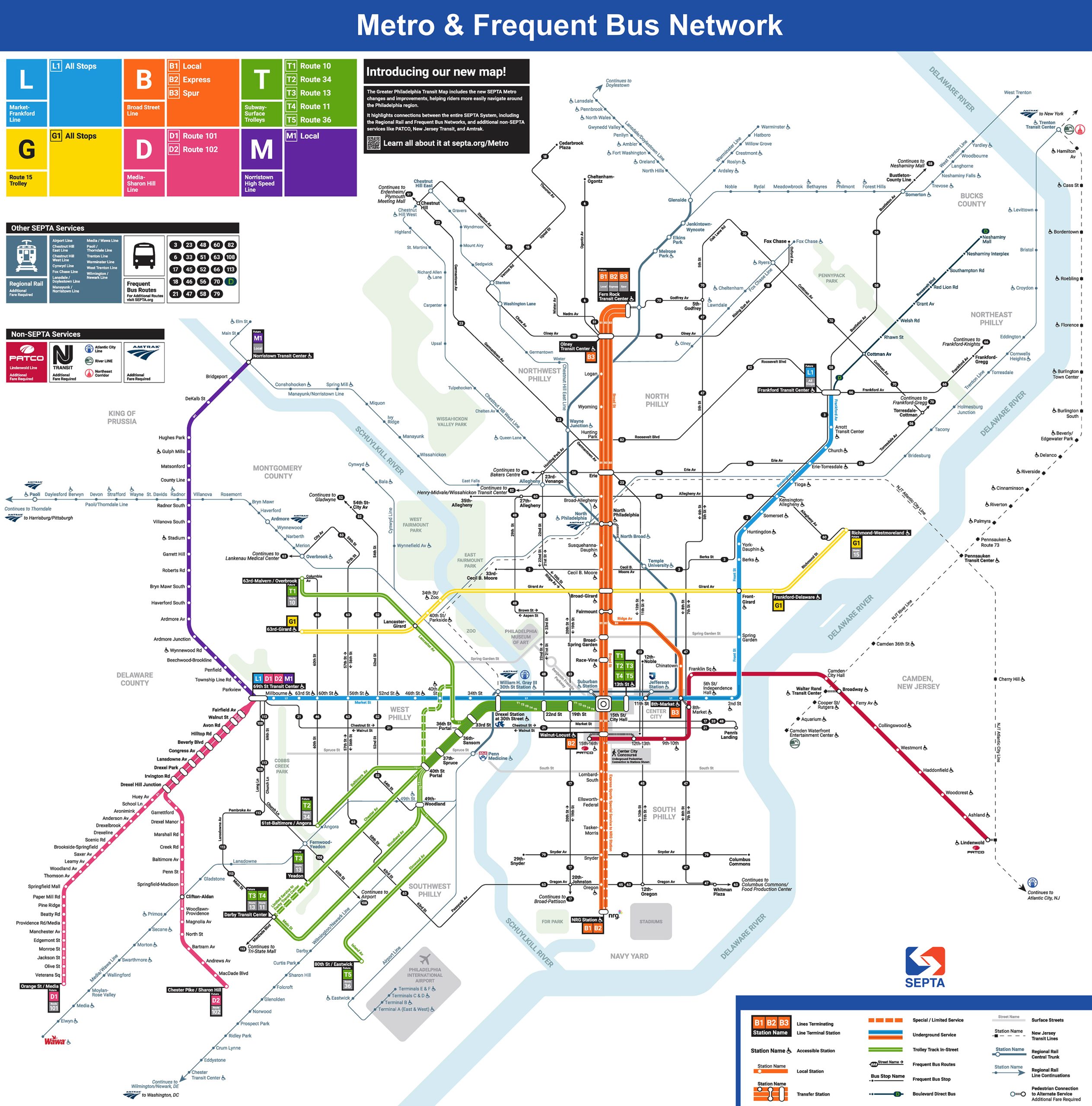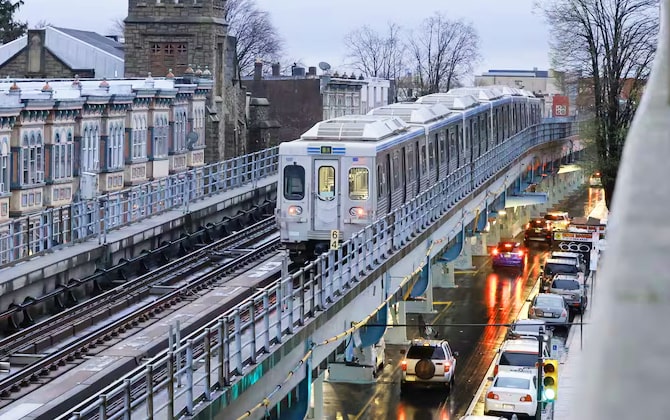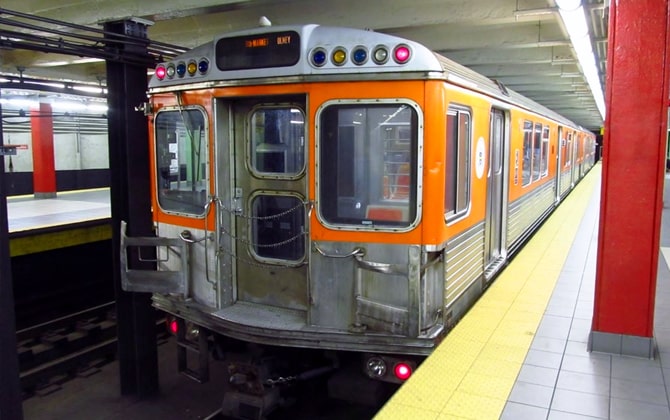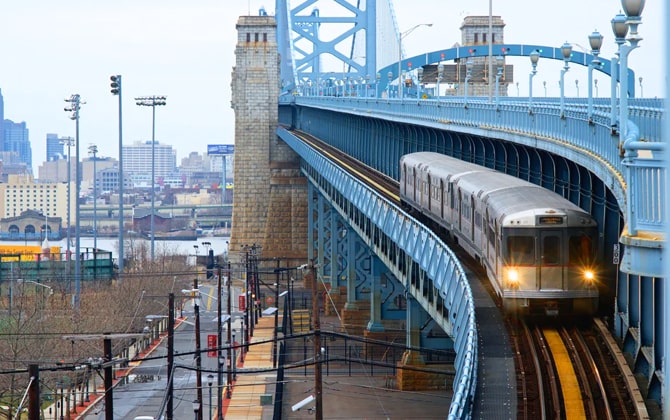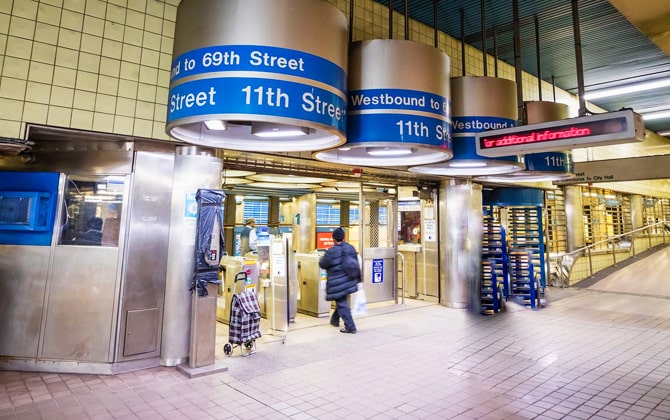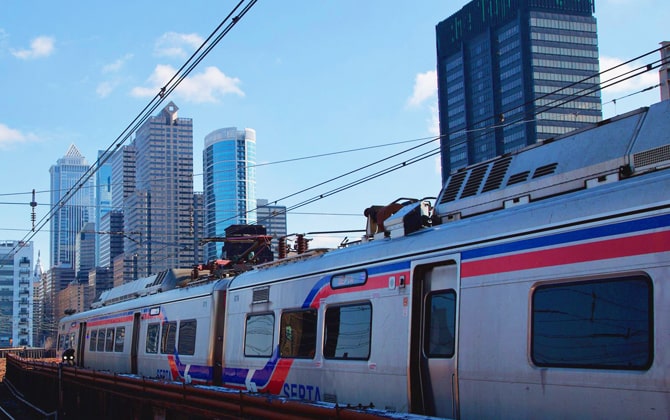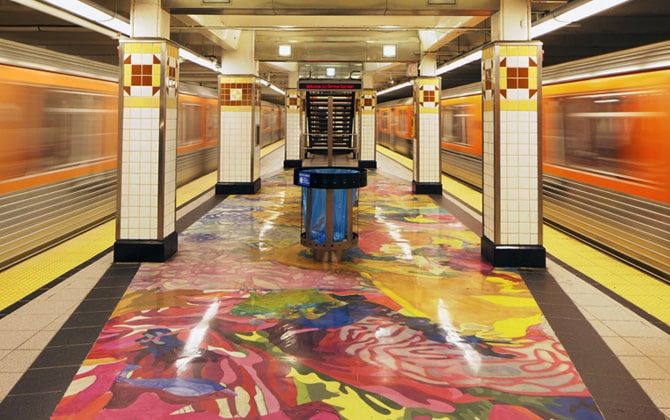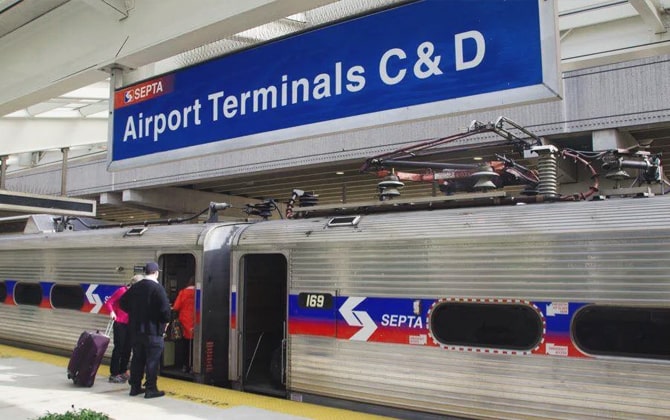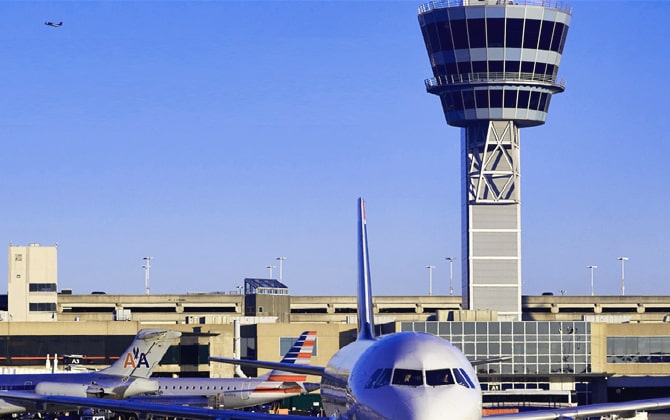Philadelphia has a fast rapid transit network run by SEPTA and PATCO. SEPTA operates two heavy rail lines inside the city. The Market–Frankford Line runs east–west. Riders call it “the El”. The Broad Street Line runs north–south. PATCO’s Speedline links central Philadelphia with New Jersey suburbs. Together, they form the Philadelphia subway system. You can view them on a single Philadelphia subway map or on the combined Philadelphia metro map. Commuters, students, and visitors use it to reach work, school, and attractions.
The first subway-elevated line opened in 1907. It ran from 69th Street to a loop under City Hall. By 1922, the Frankford Elevated joined it. That made today’s Market–Frankford Line. The Broad Street Subway began service in 1928 from City Hall to Olney Avenue. In 1938, it extended to Snyder Avenue. PATCO’s Speedline opened in 1969. It used a bridge connection built in 1936. Over time, the lines modernized and grew. In 1973, the Broad Street Line reached the Sports Complex at Pattison Ave (now NRG Station).
A one-way SEPTA ride costs $2.50 (USD). Trains also link to buses and trolleys. That extends your reach across the city. Use the subway for work, events, or sightseeing.
Philadelphia Subway Map
Philadelphia Subway Map showing different lines and stations. Click on the map to enlarge it or download the Philadelphia Metro map in PDF format.
Subway Lines and Stations
Market–Frankford Line (“L” – Blue Line)
Operated by SEPTA. The MFL spans 13.6 miles (≈21 900 m / 71 850 ft). It has 28 stations. A full trip takes about 40 minutes. Trains run every 4–5 minutes at peak times.
Route: 69th Street TC – West Philly – Center City – Frankford TC.
Major stops include:
- 34th St – near Drexel University.
- 30th St – transfers to Amtrak and Regional Rail.
- 15th St/City Hall – transfer to BSL.
- 8th & Market – transfer to PATCO.
- Frankford TC – bus hub.
All stations except Millbourne are wheelchair-accessible as of 2026. Riders enjoy skyline views and public art on elevated sections.
Broad Street Line (“B” – Orange Line)
Operated by SEPTA. The BSL is 10 miles long (≈16 100 m / 52 800 ft). It has 22 main stations and 2 on a short spur.
Route: Fern Rock TC – Center City – NRG Station.
Major stops:
- Fern Rock – Regional Rail transfer.
- Cecil B. Moore – Temple University.
- City Hall – transfer to MFL.
- Walnut–Locust – downtown theaters.
- NRG Station – Sports Complex.
The central segment has four tracks for local and express service. Express trains skip many stops. Special Sports Express trains run before and after big events.
Broad-Ridge Spur
This branch follows Ridge Avenue through Chinatown. Key stations:
- Chinatown
- 8th & Market – transfers to MFL and PATCO.
It merges with the main line north of downtown during peak hours.
PATCO Speedline (Philadelphia–New Jersey)
Operated by PATCO. The line is 14.2 miles (≈22 850 m / 74 950 ft) long with 14 stations. Trains run 24/7 with limited late-night service. A full trip takes about 30 minutes.
Route: Lindenwold, NJ – Camden – Philadelphia at 15th & Locust.
Major stations westbound from NJ:
- Lindenwold – park-and-ride; NJ Transit link.
- Broadway (Walter Rand TC) – River LINE transfer.
- Franklin Square – reopened April 2026.
- 8th & Market – transfers to MFL and BRS.
- 15th/16th & Locust – Philadelphia terminus.
All stations are accessible. Key connections make it ideal for New Jersey commuters.
SEPTA vs PATCO coverage:
SEPTA lines serve Philadelphia’s core neighborhoods on north–south and east–west axes. PATCO extends service into Camden County suburbs and central New Jersey. They overlap at 8th & Market and at City Hall’s underground concourse. Fare systems run separately.
Operating Hours and Schedules (2026)
This guide covers Philadelphia subway operating hours. Below you’ll find the Philadelphia subway timetable for 2026.
Market–Frankford Line (SEPTA):
Trains run daily from 5:00 AM to 1:00 AM. The first eastbound leaves 69th Street at 5:00 AM. The last westbound leaves Frankford at 12:45 AM. Between 1:00 AM and 5:00 AM, Night Owl bus MFO replaces trains.
- Weekday rush: every 6 minutes.
- Midday: every 10 minutes.
- Evening: every 10–12 minutes.
- Weekends: every 10 minutes.
Line length: 13.6 miles (≈21.9 km). End-to-end travel: ~40 minutes. Fare: USD 2.50 ($2.50).
Broad Street Line (SEPTA):
Trains run daily from 5:00 AM to 1:00 AM. The first northbound leaves NRG Station at 5:00 AM. The last trains depart Fern Rock and NRG around midnight. After 1:00 AM, Night Owl bus BSO covers Broad Street.
- Rush-hour local (B1): every 8 minutes.
- Rush-hour express (B2): every 8–12 minutes.
- Central segment combined: every 4–6 minutes.
- Off-peak: every 8–10 minutes.
- Evenings and weekends: every 10–12 minutes.
Line length: 10 miles (≈16.1 km). Local trip: ~30 minutes. Express: ~20–25 minutes. Sports Express runs nonstop to NRG Station.
PATCO Speedline:
Trains run 24/7. Standard service runs 4:30 AM–midnight. A temporary suspension halts trains midnight–4:00 AM until fall 2026. Check PATCO alerts for bus replacements.
- Morning rush: every 4–5 minutes.
- Midday: every 6–12 minutes.
- Evening rush: every 5 minutes.
- Night: every 30–60 minutes.
Weekend service: every 15 minutes daytime; every 45 minutes overnight. Line length: 14.2 miles (≈22.9 km). End-to-end travel: ~30 minutes.
Travel Times:
- 69th Street to Frankford (MFL): ~40 minutes.
- Fern Rock to NRG (BSL local): ~30 minutes.
- Fern Rock to NRG (BSL express): ~20–25 minutes.
- Lindenwold to Center City (PATCO): ~26–30 minutes.
- Philadelphia to Haddonfield (PATCO): ~15 minutes for ~9 miles (≈14.5 km).
Connections to Other Transit (Buses, Trams & Regional Rail)
Most subway stations link to buses, trolleys, and trains. Key hubs:
- 69th Street TC: buses, trolleys, Norristown High-Speed Line.
- Frankford TC: major bus terminal.
- Fern Rock TC: Regional Rail, buses.
- City Hall / 15th St: MFL, BSL, trolleys, Suburban and Jefferson via concourse.
- 8th & Market: PATCO and Broad-Ridge Spur.
Free transfers apply within 2 hours on a SEPTA Key card. Regional Rail’s 30th Street, Suburban, and Jefferson Stations are a short walk from subway stops. PATCO connects to NJ Transit and RiverLINE in Camden, and to Atlantic City Rail at Lindenwold.
Fares and Ticket Prices (SEPTA & PATCO)
Use this guide to compare Philadelphia subway fare.
SEPTA Subway Fares (Broad St & Market–Frankford Lines)
SEPTA uses a flat fare of US$2.50 per ride. Pay with a SEPTA Key Card, contactless bank card, mobile wallet, or exact-change cash (no transfer).
- SEPTA Key Card – US$4.95 purchase (refunded on registration). Tap to ride; two free transfers within 2 hours.
- One-Day Convenience Pass – US$6.00 for 8 rides in 24 hours.
- Three-Day Convenience Pass – US$15.00 unlimited for 72 hours.
- Weekly TransPass+ – US$25.50 unlimited Mon–Sun, includes Zone 1 Regional Rail & Airport.
- Monthly TransPass+ – US$96.00 unlimited for calendar month.
- Quick Trip Ticket – US$2.50 single paper ticket (no transfers).
- Seniors (65+) – Free with PA Senior Key Card or ID.
- Children (≤11) – Free with a paying adult (max two).
PATCO Fares and Tickets
PATCO uses distance-based fares from US$1.40 to US$3.00 per trip.
- Local Philly↔Camden: US$1.40
- Suburbs (e.g., Collingswood): US$2.60
- Full line (Lindenwold↔Center City): US$3.00
- Round-trip: double one-way fare (e.g., US$2.80).
Pay with a Freedom Card (US$5.00 purchase) or paper ticket. Contactless bank card/mobile pay available mid-2025.
Purchasing tickets:
Buy at SEPTA kiosks or PATCO vending machines. Machines accept cash, cards, or mobile wallets. Reload Key and Freedom cards online or via app.
Transfers:
SEPTA Key Card users get two free transfers within 2 hours. Cash/ticket riders pay full fare for each leg. No free transfers between SEPTA and PATCO.
Parking fees on PATCO:
Most NJ lots charge US$1 (5 AM–10 AM); free after 10 AM and weekends. Paid via Freedom Card at exit. Short-term metered spots may be US$0.25 for 2 hours.
Finding your fare:
Use PATCO’s online or kiosk fare calculator. For quick reference: max US$3.00; local US$1.40; midpoint US$2.60.
SEPTA vs PATCO fare comparison:
SEPTA’s flat US$2.50 simplifies short trips and offers passes. PATCO’s rates vary by distance and lack unlimited passes. PATCO has lower per-mile cost on longer rides.
Using the SEPTA Key Card vs PATCO Freedom Card
SEPTA Key Card
- Buy at stations for US$4.95 (refunded on registration).
- Tap at turnstiles or fareboxes; no tap-out needed.
- Register online to protect balance and set auto-reload.
- Works on Regional Rail with platform validators or conductor tap.
PATCO Freedom Card
- Buy for US$5.00; load up to US$80 online or at stations.
- Tap at entry and exit gates; exit tap deducts fare.
- Also pays US$1 parking at gated lots when tapped on exit.
- Register online for balance protection and auto-reload.
From summer 2026, PATCO will accept tap-and-go bank cards and mobile wallets, phasing out Freedom Cards.
Parking at Subway Stations
SEPTA Park-and-Ride:
- Frankford TC – 989 spaces; US$4.00/day.
- Fern Rock TC – US$2.00/day weekdays; free weekends.
- 69th St TC – US$2.00/day (day-use only).
- Olney & NRG – no official lots; use private or event parking.
PATCO Park-and-Ride (New Jersey):
- Lindenwold – US$1 (5 AM–10 AM); free after.
- Ashland & Woodcrest – same as Lindenwold; short-term metered spots US$0.25/2 h.
- Haddonfield, Westmont, Collingswood, Ferry Ave – US$1 morning fee; free after 10 AM.
All lots accept app or card payments. Lots are patrolled; use bike racks/lockers as an alternative.
Riding Rules, Safety, and Tips
General Conduct:
No smoking or vaping is allowed on stations or trains. This rule is strictly enforced. Eating and drinking are banned, except for closed containers. Keep the subway clean and avoid pests. Alcohol is forbidden. Keep aisles clear. Fold strollers in crowds. Hold bulky items close.
Noise & Courtesy:
Use headphones for music. Do not play music out loud or use speakerphone. Yield priority seats to seniors and riders with disabilities. Remove backpacks in crowded cars and hold them at your feet. Stand clear of doors when boarding or exiting.
Boarding:
Let passengers exit before boarding. This speeds up service. On the Broad Street Line, cars lock together in motion. You can only move between cars at stations. Choose the right car before the doors close.
Safety Guidelines:
SEPTA and PATCO both have transit police. Stations and trains have security cameras. You may see officers on patrol. Report safety concerns via platform call boxes or onboard intercoms. SEPTA’s Transit Watch app accepts tips. On late trips, ride in the conductor’s car and watch your belongings.
Cleanliness & COVID-19:
In 2026, masks are optional. You may wear a mask in crowds or flu season. SEPTA cleans trains daily. PATCO runs nightly deep cleans. Carry hand sanitizer. Many stations have dispensers.
Transit Etiquette:
Do not block doors. Stand clear when others board. In crowded cars, remove backpacks. Do not lean on poles. Smoking is banned and fined. Non-electric bikes ride on SEPTA off-peak and weekends in designated areas. PATCO allows bikes outside rush (6:30–9:00 AM westbound, 4:00–6:30 PM eastbound). Fold electric scooters. Keep luggage out of aisles.
Photography:
Non-commercial photos are allowed. Do not use flash. PATCO bans tripods and extra lights without permission. Carry ID if you photograph trains. Police may ask, but casual photography is fine.
Accessibility:
Many stations are accessible. Elevators serve key stops (wheelchair icon on maps). Check elevator status online. Boarding is level; some gaps exist on MFL and BSL. Use bridge plates with assistance. Locate wheelchair areas onboard. PATCO has elevators at every station and level platforms.
Security Tips:
After midnight, wait in well-lit platform areas near security cameras or Night Owl signs. Note call boxes and emergency phones. Most PATCO Philly stations close overnight, except 8th & Market. You may need to wait at a NJ station or 8th Street. Keep your items secure. Pickpocketing is rare but possible.
Enforcement:
SEPTA checks fares via turnstiles and random police inspections. Never tailgate – fines are steep. PATCO uses full gates, so you must pay before entry.
Useful Apps:
Use the SEPTA app for live arrivals, alerts, and ticket purchases. PATCO’s app offers schedules and service updates. Follow @RidePATCO on Twitter. Sign up for email or text alerts on both systems.
Elevator & Accessibility Etiquette:
If you can use stairs, leave elevators for those who need them. On escalators, stand on the right and walk on the left.
Special Situations:
At parades and celebrations, SEPTA often adds trains or offers free rides. In snow, the subways run when buses cannot. PATCO operates in most weather; high winds may slow trains on the bridge. Look for multilingual station announcements. PATCO has automated stop alerts in English.
Follow these tips for a safe, smooth ride. The Philly subway is used by thousands every day. Security and lighting have improved in recent years. Use common sense. Stay aware. Move to another car or alert staff if you notice anything unusual.
Interesting Facts about the Philadelphia Subway
Second Oldest Subway in the U.S.:
After Boston and New York, Philadelphia opened its first rapid transit line in 1907. That makes it more than 118 years old. Some original El structures still carry trains. Major rebuilds happened in the 1990s and 2000s.
“The El” Name:
Locals call the Market–Frankford Line “the El” for its elevated tracks. In 2023 SEPTA rebranded it as the “L” to match the nickname. Like Chicago’s “L,” it offers aerial street views.
City Hall Station Engineering:
City Hall station loops around the building’s foundations. Eastbound trains circle one side; westbound trains use the other. The layout is complex. It is among the city’s largest stations. Unused tunnels and an unfinished lower loop lie beneath City Hall.
Franklin Square Ghost Station:
The PATCO Franklin Square station sat closed from 1979 to 2026. It first opened in 1936. Low ridership led to its 1979 closure. In April 2026, PATCO reopened it after a major renovation.
Skip-Stop Service:
Between 1956 and 2020, the MFL used an A/B skip-stop system during rush hours. Trains skipped alternating stations to speed trips. This rare practice ended in February 2020. Now all trains stop at every station.
PATCO’s Innovation:
Since 1969, PATCO has run trains with automatic speed control. Operators still handle doors and emergencies. At launch, it featured advanced magnetic ticketing. Today it is moving to contactless fares.
Ridership Peaks:
In 2019, the MFL saw about 187,000 riders daily, making it SEPTA’s busiest line. The BSL served about 115,000 riders each weekday. PATCO carried 5.64 million trips in 2024, averaging 18,500 per weekday.
Center City Concourse:
Downtown Philadelphia has an underground concourse linking many stations. Some tunnels date to the 1920s. Not all were finished. You can spot passages that end abruptly. It is urban archaeology at its best.
Unbuilt Extensions:
Many subway extensions remain unbuilt. The Roosevelt Boulevard Subway was proposed since the 1920s to serve Northeast Philly. A station shell under Sears at Adams Ave still sits unused. Proposals to extend the BSL north or build a Parkway line never got funding.
Sports Station Name:
Pattison Station was renamed NRG Station in 2018. Locals still call it Pattison or Sports Complex station. It serves Citizens Bank Park, Lincoln Financial Field, Wells Fargo Center, and Xfinity Live.
Longest Subway Train:
BSL local trains run with 6 cars; express trains may use 8 cars. MFL trains are fixed 6-car sets. PATCO runs 2–4 cars off-peak and 6–7 cars at rush. In the past, 8-car BSL Express trains served big events.
Art and Architecture:
Many stations display artwork. Spring Garden on both lines has neighborhood murals. 46th Street MFL showcases the “Wind Hortals” installation. City Hall station is under renovation with new art and original tile features. Vintage cast-iron Broad Street Line entrances date to 1928 and are on the Historic Register.
Weather Resilience:
BSL is mostly underground, so it runs in heavy snow when buses cannot. In the 1996 blizzard, it stayed open as roads closed. The MFL’s elevated tracks need de-icing but remain reliable. PATCO slows on the bridge in high winds or ice. Third-rail heaters help prevent freezing.
PATCO’s Bridge:
The Ben Franklin Bridge opened in 1926 with transit tracks. PATCO runs on the outer lanes. From the bridge, you can see trains cross the river. The bridge also had unused streetcar tracks on the roadway.
First Subway under a River:
Philly’s first rail river crossing was the Bridge Line over the Ben Franklin Bridge in 1936. The MFL crosses under the Schuylkill River via a tunnel built by 1905. That tunnel was a major engineering feat.
Automated Announcements:
The MFL and BSL now use automated station announcements and LED displays in English. Before 2018, PATCO cars relied on manual announcements. After refurbishment, PATCO trains also have automated audio and digital signage.
Nickname Confusion:
In Philly, “subway” often means the BSL, since it is fully underground. The MFL is called the “El.” Since 2022, SEPTA brands the network as “SEPTA Metro.” Lines use letters and colors: blue “L” for the El, orange “B” for the BSL, and green “T” for trolleys.
Holiday Trains:
Each December, SEPTA runs a holiday-decorated train, often called the Santa Express. PATCO also hosts an annual Santa Train, sometimes using 8-car sets to handle the crowds.
Unopened Stations:
The BSL Spur had a station at Spring Garden & Ridge (opened 1932, closed 1939). An express station shell at Columbia Ave (now Cecil B. Moore) was never finished. The Broad-Ridge Spur has a hidden platform at 8th & Vine. These ghost stations remind us of unbuilt connections.
Broad Street Line trains and the city seal:
BSL cars display the City of Philadelphia seal alongside SEPTA’s logo. This highlights city ownership and SEPTA’s role. Dual markings are rare in transit systems.
PATCO’s future tech:
In the 1960s, PATCO used early automated fare machines with punch-card tickets. In 2007, the Freedom Card arrived and briefly worked on SEPTA. In 2021, PATCO launched a QR-based mobile ticketing app. Now it is shifting to direct contactless payments.
Future Expansion and Projects
Broad Street Line Extension to the Navy Yard:
Philadelphia’s Navy Yard is a major office and industrial hub with no rail access. The plan would extend the Broad Street Line 1.5 miles (≈2.4 km) south from NRG Station. It may add one or two stations: one at the Navy Yard employment center, another near the stadium or naval museum. In 2023–24, the city and PIDC secured US$1–2 million for feasibility studies and engineering. SEPTA included the project in its strategic plan, but the estimated cost is ≈US$1 billion. It needs federal New Starts funding. No design or timeline is set. Construction could start later this decade if funds appear. For now, SEPTA runs shuttle buses from NRG to the Navy Yard.
Roosevelt Boulevard Subway/BSL Northeast Extension:
The idea to build subway or rapid transit along Roosevelt Boulevard dates to the 1920s. In SEPTA’s 2021–2030 plan, it appears as “Bus Rapid Transit or rail.” A full subway could cost over US$3 billion. The city is funding enhanced bus service as a precursor. No shovel-ready plans exist. A station shell at Adams Avenue under a former Sears remains as a reminder. Expect bus upgrades for now.
Trolley Modernization (Subway–Surface Upgrades):
By 2027–2030, SEPTA will modernize its five subway–surface trolley lines. Plans include new low-floor trams, fully accessible stations, and high-level platforms. The subway–surface tunnel may extend west from 36th/37th to 40th Street. Surface stops will gain raised platforms. Vehicle procurement is underway by 2026. New stations in the late 2020s will link seamlessly to the Metro, easing transfers at 13th and 15th.
PATCO Expansions:
In 2021, a study proposed extending PATCO from Center City west under the Schuylkill River to University City. It may use the 40th Street trolley tunnel as a terminus, with a new river tunnel. No funding is set; the project is in feasibility. If built, it would boost commuter access to West Philly. PATCO has also floated Jersey-end extensions to Glassboro or Atlantic City. Those plans have not advanced; New Jersey now pursues a NJ Transit light rail to Glassboro.
Station Improvements:
SEPTA is renovating key stations:
- City Hall Station Rehabilitation: New elevators, wider platforms, and restored historic headhouses at BSL and 15th St.
- 30th Street MFL Station Upgrades: Better lighting and expanded entrances as part of the 30th Street District plan.
- BSL Accessibility: Elevators planned for Susquehanna–Dauphin, Tasker–Morris, Snyder, Spring Garden, and Fairmount. Full ADA compliance by 2030.
New Fare Technology:
SEPTA plans “SEPTA Key 2.0” to support open payments with bank cards and mobile wallets. PATCO will phase out the Freedom Card in 2026 in favor of tap-and-go payments. Expect upgraded fare gates soon.
Diversity, Equity & Inclusion:
SEPTA is reviewing service equity. It may restore 24-hour weekend subway service (hourly overnight trains) to support nightlife workers and riders. No firm date yet.
Capacity Upgrades:
SEPTA is considering new train cars for the Broad Street Line. The current fleet dates to the late 1970s. Future cars may have open gangways and modern amenities. The Market–Frankford fleet, built in 1997, is due for replacement in the 2030s.
King of Prussia Rail (Norristown Line Extension):
The King of Prussia Rail would extend the Norristown High-Speed Line to the King of Prussia mall and business district. Cost overruns paused the project in 2023 with no restart date. It remains on hold, refocusing SEPTA on core subway and bus network improvements.
New City Transit Plans:
The city and SEPTA are studying transit signal priority for buses and trolleys, infill stations, and links to new developments. Ideas include a new MFL station at Fairmount Avenue and service for a proposed arena at 10th & Market.
Long-term Vision:
By 2030, SEPTA aims to brand its network as “SEPTA Metro” with lettered lines and unified signage. They also plan to integrate Regional Rail under metro fares and boost train frequencies if budgets allow.
Airport Connections via Subway
Option 1: SEPTA Regional Rail (Fastest & Most Direct)
Take the subway to Center City, then transfer to the Airport Line.
Where to catch it:
- 30th Street Station: Exit MFL at 30th & Market and follow signs to Regional Rail platforms.
- Suburban Station: From BSL at City Hall, use the underground concourse to 16th & JFK.
- Jefferson Station: Exit MFL at 11th & Market and head upstairs.
- PATCO: Exit at 8th & Market or 12th/13th & Locust, then walk to Jefferson or Suburban.
Schedule:
Trains run every 30 minutes from about 5:00 AM to midnight. Last return service leaves around 12:30 AM.
Fare:
One-way costs US$6.00 with SEPTA Key or ticket; cash onboard is US$7.00. Weekly and monthly TransPass+ holders ride free on the Airport Line.
Route:
Stops at University City, Eastwick, Terminals A, B/C, and E/F. Trains run nonstop between Center City and airport stations.
Return trip:
Depart Terminal F at :10 and :40 past each hour until 12:08 AM. Board early at Terminal B for seating.
Luggage:
Regional Rail cars have space near doors. Elevators and escalators serve all airport and city stations.
Option 2: Bus + Subway combo
If the train schedule doesn’t fit, use buses:
- Route 37: From NRG Station, runs 24/7 to terminals; ~30–40 minutes.
- Route 108: From 69th Street TC to the airport; hourly overnight.
Fare is US$2.50, with free transfer on SEPTA Key.
Option 3: Use a Combination
Park at Fern Rock or 69th Street, take the subway to Suburban, then the Airport Line. PATCO riders transfer at Jefferson or 30th.
Example Itinerary (Center City to Airport):
At 8:00 AM, board a BSL local from City Hall to Suburban (1 stop). At 8:15 AM, catch the Airport train. Arrive Terminal B by 8:40 AM. Total cost: US$2.50 (subway) + US$6.00 (train). Total time: ~40 minutes.
Coming from Airport to Center City:
Follow “Trains to Center City” signs in baggage claim. Buy a Quick Trip or tap Key card. Get off at Jefferson, Suburban, or 30th, then transfer to the subway if needed.
Timing Considerations:
The 30-minute train frequency means you should time your subway connection carefully. Use the SEPTA app to avoid long waits.
Cost Comparison:
Transit costs US$8.50 total versus US$30–40 for a taxi or ride-share. Trains avoid rush-hour traffic and run reliably.
Luggage Storage:
30th Street Station offers baggage storage for Amtrak riders. SEPTA stations have no lockers. Airport stations handle luggage via elevators and ramps.
Philadelphia International Airport Station quirks:
Terminal B station serves Terminals B and C. Terminal E station serves D, E, and F via indoor walkways. All airport stations are indoors and fully accessible.
PATCO to Airport?
There is no direct PATCO service. Transfer to SEPTA at 8th & Market or 11th & Market, then follow Option 1.
